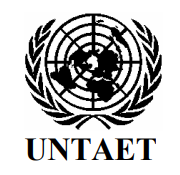
The United Nations Transitional Administration in East Timor (UNTAET),, was a United Nations mission in East Timor that aimed to solve the decades-long East Timorese crisis in the area occupied by Indonesian military. UNTAET provided an interim civil administration and a peacekeeping mission in the territory of East Timor, from its establishment on 25 October 1999, until its independence on 20 May 2002, following the outcome of the East Timor Special Autonomy Referendum. The transitional administration was established by United Nations Security Council Resolution 1272 in 1999.

East Timor is divided into 14 municipalities, which are former districts. One municipality is also a Special Administrative Region (SAR). The municipalities are divided into administrative posts, and further subdivided into sucos (villages). Atauro Island was initially a part of Dili Municipality, but became a separate municipality on 1 January 2022. The borders between Cova Lima and Ainaro and between Baucau and Viqueque were changed in 2003.

The National Republican Guard or GNR is the national gendarmerie force of Portugal.

The Torre do Tombo National Archive, commonly known simply as the Torre do Tombo is the national archive of Portugal, located in Lisbon. Established in 1378, it is one of the oldest archival institutions in the world.

The National University of East Timor, is a public university in East Timor, the only one of its kind in the country.
The Monastery of the Mónicas, located in São Vicente, Lisbon, was a Portuguese nunnery dedicated to the mother of Augustine of Hippo, Saint Monica. It later became a prison.
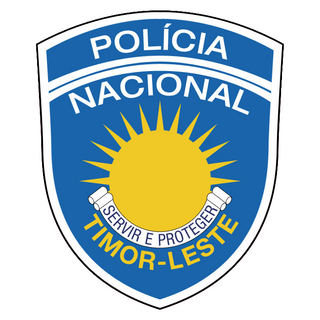
The National Police of East Timor or PNTL is the national police force of East Timor.

The Domus Municipalis is a Romanesque building in the northeastern municipality of Bragança in Portugal. The exact function of this building, even after research completed in the 20th century, is still largely unknown: it could have served as cistern, but there are doubts if this was its primary function.

The National Archives of Brazil were created in 1838 as the Imperial Public Archives. The Archives were renamed in 1911, and are located in Rio de Janeiro. The National Archives of Brazil is the Brazilian institution responsible for the management, preservation and dissemination of federal government documents. Since 2011, it is subordinated to the Ministry of Justice and Public Security.

The Ministry of Foreign Affairs, is the Portuguese governmental department responsible for the formulation, coordination, and execution of the foreign policy. The Ministry has its headquarters in the Palácio das Necessidades, in Lisbon. Its current head is the Minister of State and of Foreign Affairs, Paulo Rangel. There are three Secretaries of State which are part of the Ministry: European Affairs; Foreign Affairs and Cooperation; and Portuguese Communities.
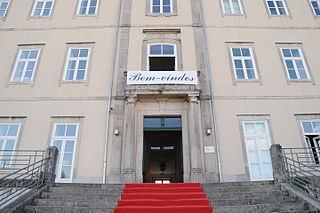
The Sá de Miranda Secondary School, is a Portuguese public school in civil parish of São Vicente, in the municipality of Braga, in the northern district of Braga.

The Fort of Cinco Ribeiras, also known as the Fort of Nossa Senhora do Pilar or Fort of São Bartolomeu, ruins of a 16th-century fortification located in the municipality of Angra do Heroísmo, along the southeast coast of Terceira, Portuguese archipelago of the Azores.

The National Defense Council (CDN) is a consultative body of the President of Brazil on matters of national security, foreign policy, and defence strategy. The Council was established on 29 November 1927 by President Washington Luís. It is composed of key ministers and military commanders and chaired by the President of Brazil.
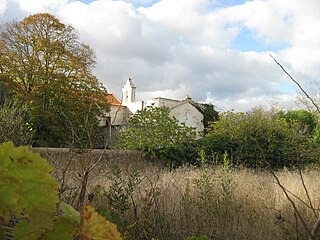
The Convent of Our Lady of Mount Carmel is a medieval carmelite convent and church complex in the civil parish of Lagoa in the municipality of Lagoa in the Portuguese Algarve. The original convent was all but destroyed in the 1755 Lisbon earthquake. After the extinction of the religious orders in Portugal in 1834, the property was taken over by a signeurial family which continued to provide church services.
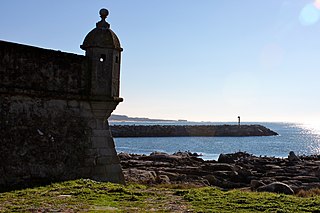
The Fort of Lagarteira is a medieval fort in the civil parish of Vila Praia de Âncora, municipality of Caminha in the Portuguese Norte, classified as a Property of Public Interest.

Brazil–East Timor relations are the bilateral relations between Brazil and Timor-Leste. Brazil has an embassy in Dili and East Timor has its own only South American embassy in Brasilia. Both countries are members of the Community of Portuguese Language Countries. Due to their shared history as a Portuguese colony, Brazil and Timor-Leste have had formal relations since before Timor-Leste became an independent state in 2002. The predominant avenues for their relations are via economic capacity building programs provided by Brazil in Timor-Leste and as a part of both countries participation in the Community of Portuguese Language Countries. Brazil has been supportive of Timor-Leste's development as an independent democracy, and the two have cooperated on programs as diverse as technological training programs, Portuguese language instruction, and football.

Beatriz Amélia Alves de Sousa Oliveira Basto da Silva was born in Anadia, Portugal in 1944 and majored in history at the University of Coimbra with the thesis of Historiografia - o Conceito de História em António Caetano do Amaral.
The 28 de Novembro Public Secondary School is a Timorese educational institution based in Becora, in Dili, the country's capital. It is one of the largest educational institutions in East Timor.
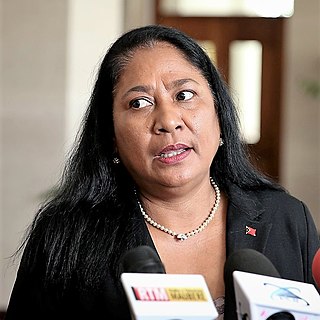
Maria da Paixão de Jesus da Costa is a politician and diplomat from East Timor. She is a member of the Partido Social Democrata (PSD) and was vice president of the party.

















